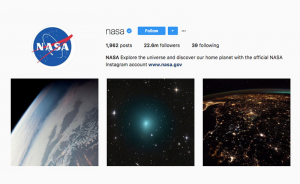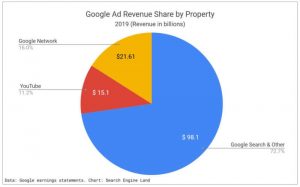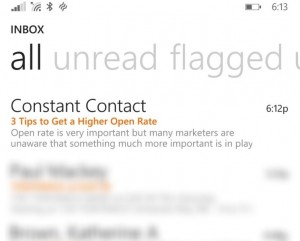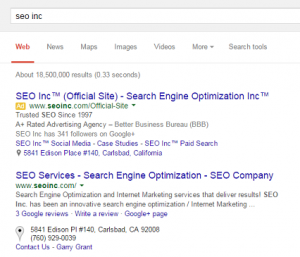
No company can establish a sustainable online presence with big budget advertising alone.
Content marketing to the YouTube generation requires acting like a YouTuber, an expert, and an advertiser. What’s needed in other words, is a multi-tiered approach.
The Help Hub Hero approach to video marketing is such a strategy. This segmented approach can establish a lasting, influential online video presence.
What Is Help Hub Hero?

YouTube has developed a very useful model to this multi-tiered content approach in the form of hero, hub, hygiene (the latter of which we have relabelled ‘help’):
- Hero: attention grabbing, big advertising pushes
- Hub: valuable, engaging content, targeted at prime prospects who already have brand awareness
- Help: loyalty creating, helpful content, discoverable via YouTube searches
The big impact hero videos create the traditional brand awareness spikes seen with any multi channel video advertising campaign.
The help and hub content build on this by establishing a growing online subscriber and follower base with valuable and interesting targeted content.
Combined, you’re creating genuine value with your brand’s content. This in turn helps grow your subscriber base, who in turn actively promote your new content. In this sense help, hub, hero is self-reinforcing.
So what are help hub hero videos and what differentiates them from each other? Let’s look at each in turn.
Hero Video (Being An Advertiser)
Hero videos are your big advertising pushes. Think of these as your attention grabbing videos.
Hero videos should be designed with your brand image in mind, but they should be emotionally evocative and leave a lasting impression. They are less frequent than the other two content types in our model, but they will inevitably command a larger budget and be highly polished and professional looking as a result.
Calls to action are important to drive those consumers who are interested in discovering more about your brand towards your YouTube channel and other online assets. That said, you should try to avoid the overt sales pitch or overloading the viewer with information. You’re trying to tell a story about your brand here, so your objective should be about emotionally connecting with your audience and leaving a lasting impression.
This TV ad was produced by Aspect for Nationwide Bank in the UK and is a perfect example of professionally produced hero content. The video aired in the UK at prime time and as a result achieved over 3m YouTube views:
Hub Video (Being A YouTuber)
Hub content is the content you want to serve to people who have moved beyond the awareness phase of the marketing funnel and are aware of your brand.
The majority of people who come into contact with your hero content will not go on to find out more, but your hub content is there to make sure that the ones that do, stick around.
Because Hub videos are push content you’re reliant on identifying who your prime prospects are and then building networks across all your social media.
Hub videos should aim to foster interest in your brand but unlike hero content it needs to have a more specific appeal for the viewer. Because it’s more targeted at your prime prospects, it needs to inspire loyalty towards your brand through thoughtful and interesting content that links to their interests.
Examples are behind the scenes footage, onsite filming, interviews with staff or customers, video diaries and product demos and tutorials.
Waitrose (part of the John Lewis partnership) have a fantastic archive of hub content on their YouTube channel, which theyve dubbed Waitrose TV:
Help Video (Being An Expert)
Help videos need to do exactly what they say they do and offer users helpful content. This is less about promoting your brand and more about creating loyalty.
Because help videos are created specifically to answer and address problems amongst your target demographic, they need to be properly optimised for existing YouTube search queries and go through a proper SEO process.
This is pull content and it’s aim is to make your brand discoverable across a range of popular and relevant topics.
Unlike hub content that is pushed out to people who have an appreciation of your brand, hero content can be seen as appealing to those YouTubers who fall into your target market but don’t yet engage with your content on a regular basis. By building up an archive of informative, user-focused evergreen content, you begin to build a much wider appeal, raising your brand profile and building loyalty amongst existing customers and potential customers alike.
The Nike Academy is a perfect example of a brand identifying a key interest of its core market and producing genuinely valuable help content to build a huge YouTube subscriber base:
Conclusion
The internet is a complex and labyrinthine social structure, shaped in large part by the users who occupy its social spaces.
This democratisation of content has taken the power away from traditional publishers, editors, and advertisers and placed it in the hands of consumers.
As video marketers this means understanding the zeitgeist as much as it means shaping it. It also means creating a video marketing strategy that goes beyond traditional TV advertising models and builds online presence, through peer to peer endorsements and sharing.
To do this we need to understand the power of valuable content, as well as the potential of powerful, well produced video advertising.
* Adapted lead image: ![]() Public Domain, pixabay.com via getstencil.com
Public Domain, pixabay.com via getstencil.com
The Help-Hub-Hero Approach To Video Marketing
The post The Help-Hub-Hero Approach To Video Marketing appeared first on Search Engine People Blog.
(70)








